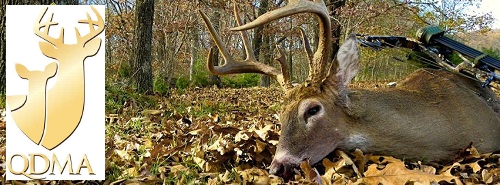 Let’s face it, hunting public land can be tough. This is especially true when you have never laid eyes on the property. There are some steps you can take, however, that will tip the odds in your favor when it comes to hunting a new area. Let’s take a look at five such steps that should help you fill those public land deer tags this fall.
Let’s face it, hunting public land can be tough. This is especially true when you have never laid eyes on the property. There are some steps you can take, however, that will tip the odds in your favor when it comes to hunting a new area. Let’s take a look at five such steps that should help you fill those public land deer tags this fall.
GO AERIAL
Aerial photos, that is! Before I ever step onto a new piece of public hunting land or WMA, I like to get a good feel for the area’s terrain and habitat by looking over aerial photos and topographical maps. Thanks to the Internet and Google Maps, this is a pretty simple process.
Once you have located the hunting property on Google, a lot of great information can be had from a high quality aerial photograph. You can differentiate the various habitat types: crops, fallow fields, stands of hardwoods, pine plantings, cedar thickets, etc. You can also locate water features, drainages, and potential travel funnels.
In addition to the habitat and terrain, don’t overlook studying the area’s access points on the map. This will give you a good idea of where the hunting pressure will come from, as well as potential areas off the beaten path. Research has shown the further you get from vehicle access, the less hunting pressure you have to contend with. That doesn’t mean, however, that a long walk is always in order to find a good spot. Sometimes it is simply an overlooked area near the road or a small tract off by itself that can pay big dividends.
MAKE THE CALL
The next step to public land deer hunting success is making a call to the people who know it best; the ones who manage it. The titles will vary, but it could be a wildlife biologist, area manager, or in the case of my former position with the Georgia DNR, a wildlife technician. You should be able to track down their contact information via the Internet or with a phone call to your state fish and wildlife agency.
When you get them on the phone, DO NOT make the mistake of asking where to go to kill a big buck. I can tell you from my 10 years of public land management experience that these folks hear this question way too often, and nothing tightens their lips quicker. Instead, show them that you have done your homework by asking details about specific locations, such as hunting pressure, what food sources are around, the age structure, hunter success, etc. You will get a lot more information when they see you’ve already put some effort in yourself.
SCOUT IT OUT
This one should be pretty obvious, and a lot of public land hunters skip right to this step. Since you’ve taken the time to do your homework, though, you will have a much better idea of where to begin your scouting efforts and what to look for while you are out there.
There is no replacement for time spent on the property. Period. Sure, you could luck up and kill a mature buck the first time you ever step on a WMA, but the odds against this are astronomical. Every hour spent on the area learning the terrain, the habitat, deer patterns, and the quality of bucks present tips the odds in your favor.
If it’s a large tract of public land, consisting of thousands of acres, don’t let the sheer size overwhelm you. You don’t have to scout the entire property. Use the research that you’ve done to narrow your efforts down to several hundred acres and focus on learning everything you can about that smaller tract.
GET THE PICTURE
It’s a risky practice on public land, but in my book, the information to be gained by running trail cameras is worth the risk. Good quality units can be had for around $100 and most companies make metal lock boxes and cables that you can use to safely attach your camera to a tree. Is it theft-proof? No. But it will certainly lower the odds of it disappearing. Another way to reduce the chances of having them stolen is to run them through the week and pull them before the weekend hunters arrive.
For more insight on actually setting up your trail cam, check out 7 Ways to Better Trail Cam Shots.
STICK WITH IT
Probably the most important key to deer hunting success on public land is persistence. Be out there as often as you can, and have multiple stand sites ready to avoid burning out any one hunting location. On the days you can hunt, be willing to sit in the stand all day if possible. Most of the other hunters will be heading out of the woods after a few hours on the stand in the morning, and then come back a few hours before dark, both of which can get the deer up on their feet and moving in your direction.
There is no magic formula when it comes to deer hunting public land. However, these five steps should reduce the time you spend learning a new area and help to tip the odds in your favor of filling your deer tag this fall.
